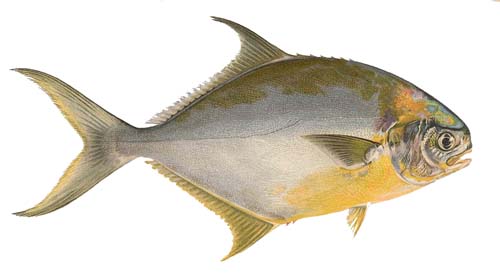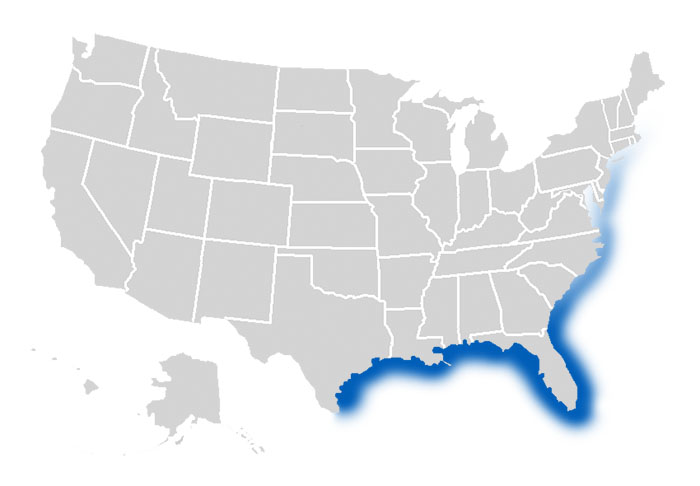Known to be an especially good-tasting fish, pompanos are found in the western Atlantic ocean from North Carolina to Florida and in the Gulf of Mexico. These fish can be caught using various methods, including bait casting, fly fishing, saltwater jigging, spin casting, still fishing and surf casting. They are especially fond of sand fleas and can be found wherever large amounts of them are present.

Habitat: Bay, Ocean
How to identify Pompano
There are 21 species of pompano worldwide. The most common pompano species in the North America include the African Pompano and Florida Pompano, with the later being the most common and sought after of the two species.
Pompanos have blue-green backs and silver or yellow abdomens. Their fins are a dull, yellowish color. They have a flattened body and a large, forked tail. The mouth on the pompano faces downward, and it has a snub-like nose. Although they resemble a small permit, they lack the permit’s black marking under the pectoral fin. There are also no stripes on the pompano’s sides. These fish can grow from 17 to 25 inches long.
Where to catch Pompano
Pompanos are marine fish that live in the western Atlantic Ocean. Pompano can be found from North Carolina to Florida and in the states along the Gulf of Mexico. In the warmer months, they will move to the northern areas, and in the winter, they migrate to the more southern areas. Pompano spawn in deeper waters from spring through late fall. Young pompano can live in lower salted areas, as in marshes, while mature pompano prefer coastal waters.

The following are habitats where you can catch Pompano:
- Estuaries
- Breakers
- Coastal Waters
- Jetties and Breakers
- Man-made Structures
- Mangroves
- Piers, Docks and Pilings
- Shore Points
- Surf and Shore
- Tidal Flats
How to catch Pompano
Often cooked whole, pompano are an excellent food choice. The best place to catch them is close to the shore. Anglers generally use light spinning tackle for shore and pier fishing. Look for these fish in estuaries, bays, piers, sand flats, and along sloping shores with sandy or muddy bottoms. When fishing for pompano, pay attention to the tides. The best times to catch them are when the tides are moving in or out. Look for areas with rip currents or areas where there are deeper holes in the sandbars. They love to eat sandfleas, so look for areas on the beach where sandfleas live in large amounts. The best methods to use for pompanos include bait casting, fly fishing, saltwater jigging, spin casting, still fishing, and surf casting.
The following are effective fishing methods and techniques for catching Pompano:
Best Lures, Bait & Tackle to catch Pompano
Pompano love sand crab flies, also known as sand fleas. They will also hit on live shrimp and squid. When it comes to lures, try small jigs, spoons or walking baits.
The following are fishing lures, bait and tackle that can be used to catch Pompano:



